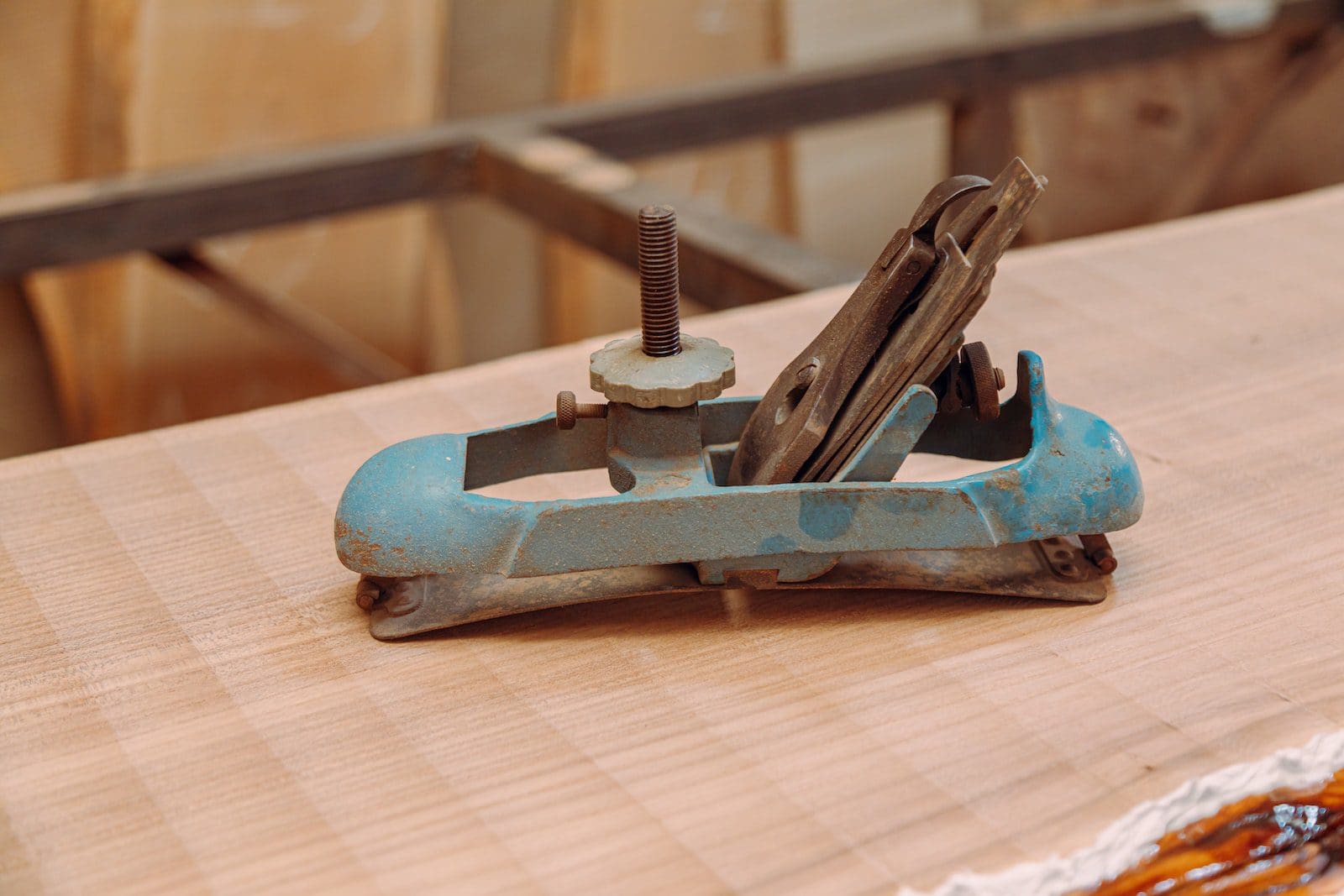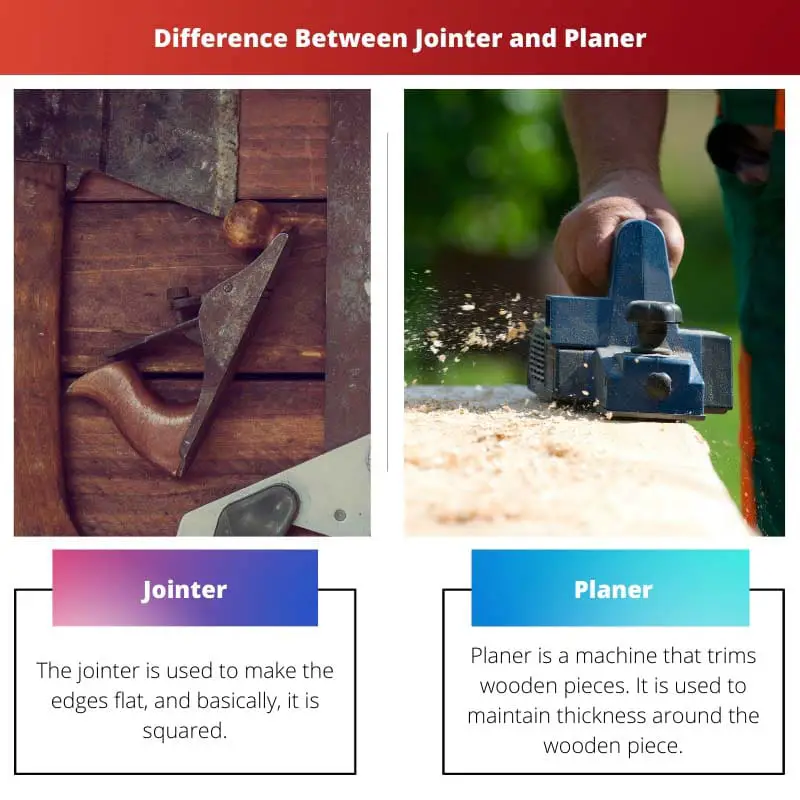Jointers and Planers are widely used by the wood industry. There is confusion between the applications of Jointer and Planer. They are considered to do the same job.
Key Takeaways
- Jointers create a flat surface on wood by removing material along its length.
- Planers ensure uniform thickness by shaving material from the wood’s surface.
- Jointers square up wood pieces, while planers create even thickness across the wood.
Jointer vs Planer
A jointer, also known as a surface planer, is a woodworking tool used to create a flat, even surface on the face of a board. It works by using rotating blades to shave off thin layers of wood. A planer, also known as a thickness planer, is a woodworking tool used to create a consistent thickness throughout the length of a board. It works by using rotating blades to remove thin layers of wood.

The jointer is machinery that is widely used by the wood industry. It is a heavy machine. This helps to make the edges of the wooden piece into a square. It makes the edges straight.
Planer is machinery that is widely used to make surfaces smooth and flat. This works from the above. It makes the surface parallel and maintains a consistent thickness around the workpiece.
Comparison Table
| Parameters of Comparison | Jointer | Planer |
|---|---|---|
| Job | Edges to square | Thickness of edge |
| Face | Single face | Parallel face |
| Thickness | Roughly | Consistent |
| Way of work | Below | Above |
| Warp removal | Yes | No |
| Cost | Cheap | Costly |
What is Jointer?
The jointer is used to make the edges flat, and basically, it is squared. The wooden pieces are flat at the edges so that the pieces can be joined later on with other wooden pieces.
The tables are known as infeed and outfeed. Infeed is the table on which the workpiece does its work, and outfeed is the table in which the machine floats when it is cut from the cutting head.
The piece comes on the outfeed. The cutting head has a blade that has to be managed so that the desired workpiece comes out.
The cutting head has more than two very sharp knives. The axis of rotation is perpendicular to the direction of feed. The cutting process happens in the opposite direction of the feed.

What is Planer?
Planer is a machine that trims wooden pieces. It is used to maintain thickness around the wooden piece. It completes the work in a single pass.
The rollers are in a set inside the machine. The table is the base of the machinery. The table can be adjusted as required. This machine can handle very large pieces also.
The machine has a high construction. It needs a powerful motor to complete the mechanism. It is also known as a planer thicknesser in the UK.
This piece cuts the wooden piece into a perfect dimension so that the wooden piece maintains proper thickness all around the wooden piece.

Main Differences Between Jointer and Planer
- The jointer is used to remove warp, but Planers are not used to remove warp.
- Jointers are cheaper than Planers.


It is interesting to note that jointers are cheaper than planers and that jointers are used to remove warp while planers are not.
Good point about the cost and capability differences.
The information on the planer thicknesser and its function is particularly useful. It is interesting to note that the planer can handle very large pieces.
I agree, the planer’s function and capabilities are clearly explained.
Absolutely, understanding the capabilities of the machinery is crucial.
The detailed comparison table provided helps understand the specific functions of both jointers and planers. The information on infeed and outfeed tables also adds to the understanding.
I agree, the table and infeed/outfeed information is very useful.
The discussion on managing the blades of cutting head on the jointer is quite informative. This Article clearly details the working of a jointer and planer.
Yes, the working details are explained concisely.
This article makes a clear point about the differences between jointers and planers. The explanation about the way a jointer creates flat edges and how a planer maintains consistent thickness is highly informative.
I agree, the article provides a great comparison.
Yes, the explanation is quite detailed and well structured.
The fact that jointers remove warp and planers don’t is insightful. The article does well to highlight the different functionalities of the two machines.
I agree, the article was very informative.
Thank you for the detailed explanation of the differences between jointers and planers. The information provided is very helpful.
Agreed, the article provides a comprehensive comparison.
The information provided in the article is comprehensive and makes a clear distinction between the functionalities of jointers and planers.
Absolutely, understanding these differences is crucial for woodworking.
The information on maintaining a consistent thickness around the wooden piece using a planer is quite valuable. The article gives a clear understanding of both jointers and planers.
Absolutely, it’s a very comprehensive piece.
Agreed, the article explains the functionality of both machines thoroughly.
Using a jointer is a great way to smooth out the surface of the wood and make it flat. The planer, on the other hand, is perfect for maintaining consistent thickness across the entire length of the wood.
Very well explained!